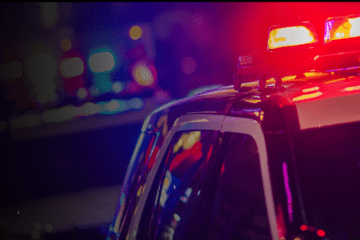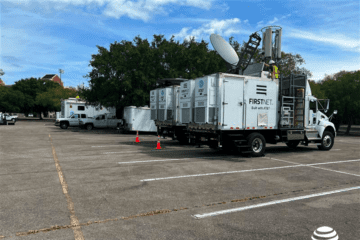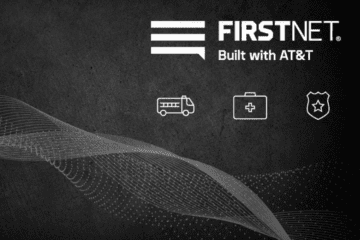Less than two weeks ago, we were faced with a deadly disaster unlike anything our state has seen in almost a century. Hurricane Ian barreled through Florida, Georgia, North and South Carolina and Virginia, leaving devastation in its wake. While we continue to understand the depth and breadth of the damage left behind, keeping our employees safe and first responders, our customers, and communities connected are our top priorities. And today, we’re doing just that. Even as I write this, we’re seeing remarkable network improvements in some of the hardest hit areas where our teams are working tirelessly to restore communications, our wireless network across South Carolina, North Carolina and Virginia is operating normally. And of the wireline customers where we know service was impaired in Florida, nearly 80% have had their service restored. Families are finally starting to reconnect from areas disrupted by the storm, sharing their status with loved ones near and far. We’re grateful to help enable these connections and bring peace of mind to communities across Florida. But to do so, we had to get to work.
Preparing for the Storm
As the only carrier in the country with a weather operations center and full-time meteorologists on staff, we are uniquely positioned to proactively prepare for and respond to storms and other natural disasters.
In the days leading up to Ian, we positioned our arsenal of disaster response equipment, put personnel on standby in strategic areas and closely collaborated with federal and state public safety stakeholders to expedite response time in support of impacted communities and public safety on FirstNet® – America’s public safety network. It takes a village to prepare for a natural disaster of this size, and we were ready.
Our Network Disaster Recovery (NDR) Program Goes to Work
 Right now, we have about 180 crews focusing on the hardest hit areas – this includes challenging locations such as Pine and Sanibel Islands. These crews are part of AT&T’s expansive Network Disaster Recovery (NDR) program, with more than 40 full-time employees and over 400 company volunteers ready to respond during disasters and emergency events.
Right now, we have about 180 crews focusing on the hardest hit areas – this includes challenging locations such as Pine and Sanibel Islands. These crews are part of AT&T’s expansive Network Disaster Recovery (NDR) program, with more than 40 full-time employees and over 400 company volunteers ready to respond during disasters and emergency events.
We have one of the industry’s largest and most advanced disaster response programs to help keep communications running when disasters like Ian strike. We have generators and other full-scale communications solutions, like satellite-connected portable cell sites on heavy trucks, at our established staging yards and are moving them into impacted areas. We are using amphibious vehicles and high-water equipment across the state to help with access to flooded areas. And for impacted areas that are not safely accessible, we have drone operations dispatched to provide wireless and wireline damage assessments.
FirstNet Working Side-by-Side with Public Safety
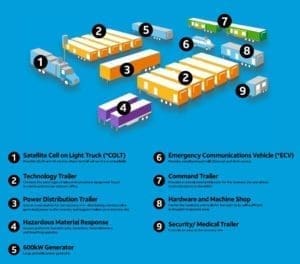 When it comes to natural disasters of this size, we know we can’t do it alone. Our crews are working to keep wireless communications running so first responders, emergency personnel and others can stay connected during rescue and recovery efforts. Not only is the FirstNet Response Operations Group on the ground providing support solely dedicated to public safety, but they’re deploying dedicated FirstNet assets where needed for emergency communications.
When it comes to natural disasters of this size, we know we can’t do it alone. Our crews are working to keep wireless communications running so first responders, emergency personnel and others can stay connected during rescue and recovery efforts. Not only is the FirstNet Response Operations Group on the ground providing support solely dedicated to public safety, but they’re deploying dedicated FirstNet assets where needed for emergency communications.
- 70+ dedicated full-scale solutions deployed to support public safety on FirstNet after this storm. This includes SatCOLTs – or Satellite Cell on Light Trucks, CRDs – Compact Rapid Deployables, and in-building communications solutions.
- To provide communications to Sanibel Island, the FirstNet team loaded a portable cell site onto an amphibious vehicle.
- For Pine Island, teams loaded a portable cell site onto a Black Hawk helicopter. This portable cell site provides wireless service for first responders and Wi-Fi for the residents.
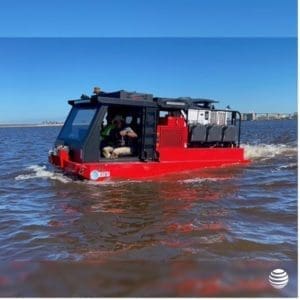

Our History Keeping Florida Connected
While we’re excited to share how our response to Hurricane Ian is going, our preparation started far before the days leading up to this weather event.
We’re building critical – and resilient – networks across the state of Florida. On your average day, these networks help students participate in online learning, help patients connect with their providers via telehealth services and help families stay in touch.
When disasters hit, these are the same networks that serve as a lifeline to the outside world. That’s why we’ve invested more than $3.1 billion in our wireless and wireline networks from 2019-2021 in Florida and millions more in our NDR efforts that include pre-storm preparations.
- Over the past year, we’ve added more amphibious and high-water vehicles to our response fleet to navigate flooding and get tech and supplies to our network equipment.
- We’ve increased the number of smaller compact satellite units to expand our quick mobile response.
- While our network is designed to be fully diverse across power and transport in and out of key facilities, we’ve added additional fiber routing during the last year to all our network switching hubs nationwide to further improve resiliency – these 3rd emergency pathways now provide an industry-leading extra link to each hub.
- And over the past few years we’ve added thousands of fixed generators at cell sites nationwide, all part of our steadfast commitment to keeping our customers – and the communities we call home – connected.
- We’re even working together with the Department of Energy’s Argonne National Laboratory to project how changes in climate will impact company infrastructure and operations up to 30 years in the future.
It’s these investments that helped us prepare for Hurricane Ian. And it’s these investments that will ensure we’re prepared for the next one. We know natural disasters don’t stop, but neither do we.
For the latest on our Hurricane Ian recovery efforts, click here.



